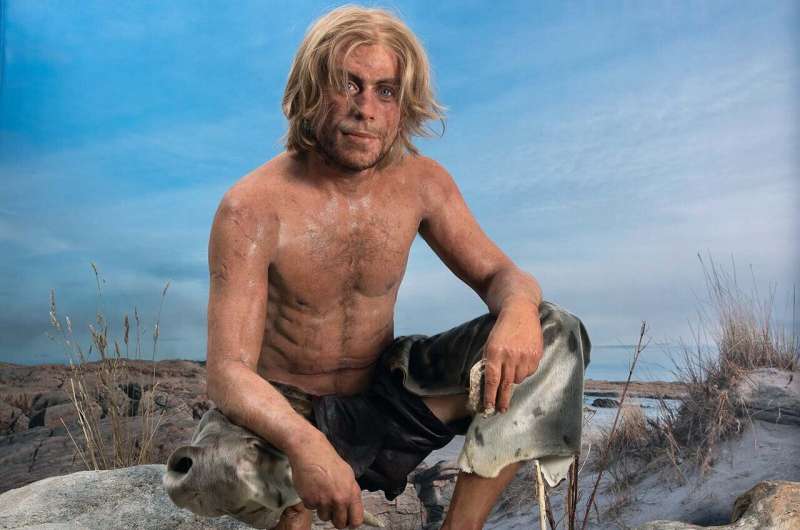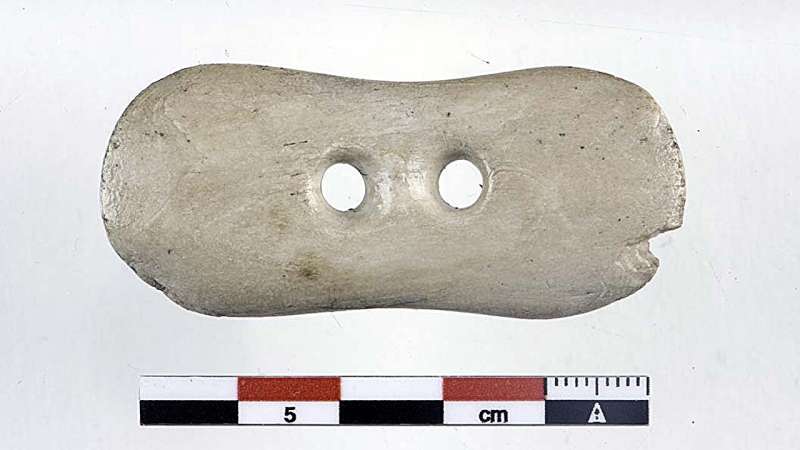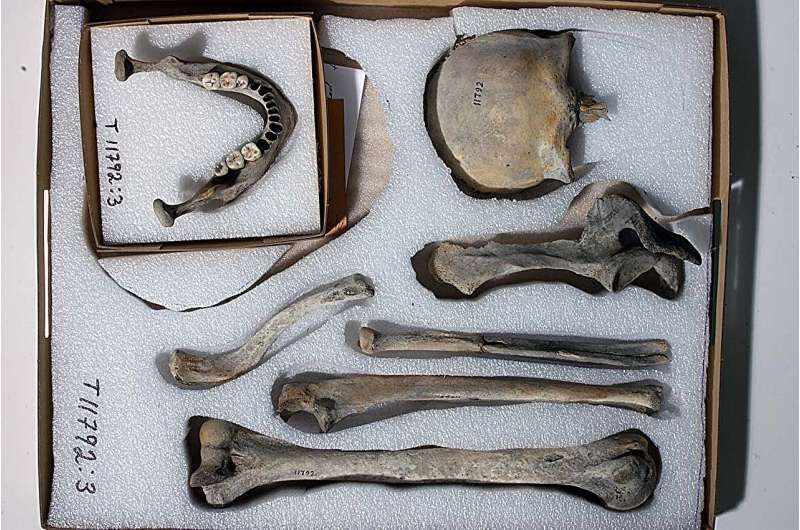This article has been reviewed according to Science X's editorial process and policies. Editors have highlighted the following attributes while ensuring the content's credibility:
fact-checked
trusted source
proofread
Meet the Stone Age Trøndelag man

In 1916, a road up the hill to Fausland farm on the island of Hitra was being upgraded, using gravel from the shore along the innermost part of Barmfjorden. Suddenly, the workers noticed some human bones in between all the sand and stones. The bones belonged to a man who was approximately 25 years of age and who had died at the very end of the Stone Age—4,000 years ago.
"We think that he drowned. When he died, the sea level was 12.5 meters higher than it is today, and the discovery site would have been at a depth of 4 meters. Parts of the skeleton are well preserved, and must have been covered with shell sand on the seabed shortly after he died," says archaeologist Birgitte Skar from NTNU University Museum.
A warrior?
Along with the bone remains, a dagger and an arm guard were found. The arm guard is an oblong piece of bone with two holes in it that would have been attached to the wrist of the hand holding a bow. The guard would protect the wrist from the blow the bow string made when firing arrows.

"These pieces of equipment may indicate he was a warrior," says Skar.
Skar adds that it is not possible to say whether the drowning occurred as a result of combat or whether it was an accident.
What we do know is that the Hitra man lived in a very turbulent period. Up to that point, most people lived as hunter–gatherers, and it wasn't until the very end of the Stone Age—during the time the Hitra man lived—that agriculture became fully established in Norway.
"Elements of agriculture had been introduced in southern and eastern Norway earlier, but in central Norway, along the coast in the west and in northern Norway, agriculture was first established during this period.
"We believe that agriculture was introduced by migrating people who arrived in Norway to get more land—and they were willing to use weapons to do so. We must therefore expect that there were violent clashes between the people who already lived here and the newcomers," says Skar.
The new people brought new knowledge to the country: about animal husbandry and agriculture, but also about a different way of organizing society.
"They lived in hierarchical societies, had a different understanding of the world, another religion, and a large network of contacts down in Europe.
This knowledge led to major changes, politically, economically and socially," says Skar.
The Hitra man is being researched right now
There is still much we don't know about this dramatic era in Scandinavian history, and research is ongoing. The Hitra man is part of this research, along with many other skeletal discoveries.
Right now, his DNA is being analyzed at the Lundbeck Foundation Center for Geogenetics at the University of Copenhagen.

"At NTNU University Museum, we have also been conducting isotope analysis. Among other things, this provides insight into what the Hitra man had eaten and information about whether it is likely that he migrated over large geographical distances during his life.
"We already know that the vast majority of the food he ate came from the land. So even though he was found on Hitra—in a place that was underwater at the time—it wasn't primarily seafood he ate," says Skar.
The Hitra man's appearance has been recreated at NTNU University Museum based on several factors. Skeletal measurements tell us that he was approximately 169 cm tall and wear and tear on his teeth suggest he was around 25 years old when he died. The color of his hair, skin and eyes have been obtained from DNA analyses of a number of other individuals from the same period with similar DNA.
It will be very exciting to see what else the researchers find out about the Hitra man and the society in which he lived.
Provided by Norwegian University of Science and Technology





















